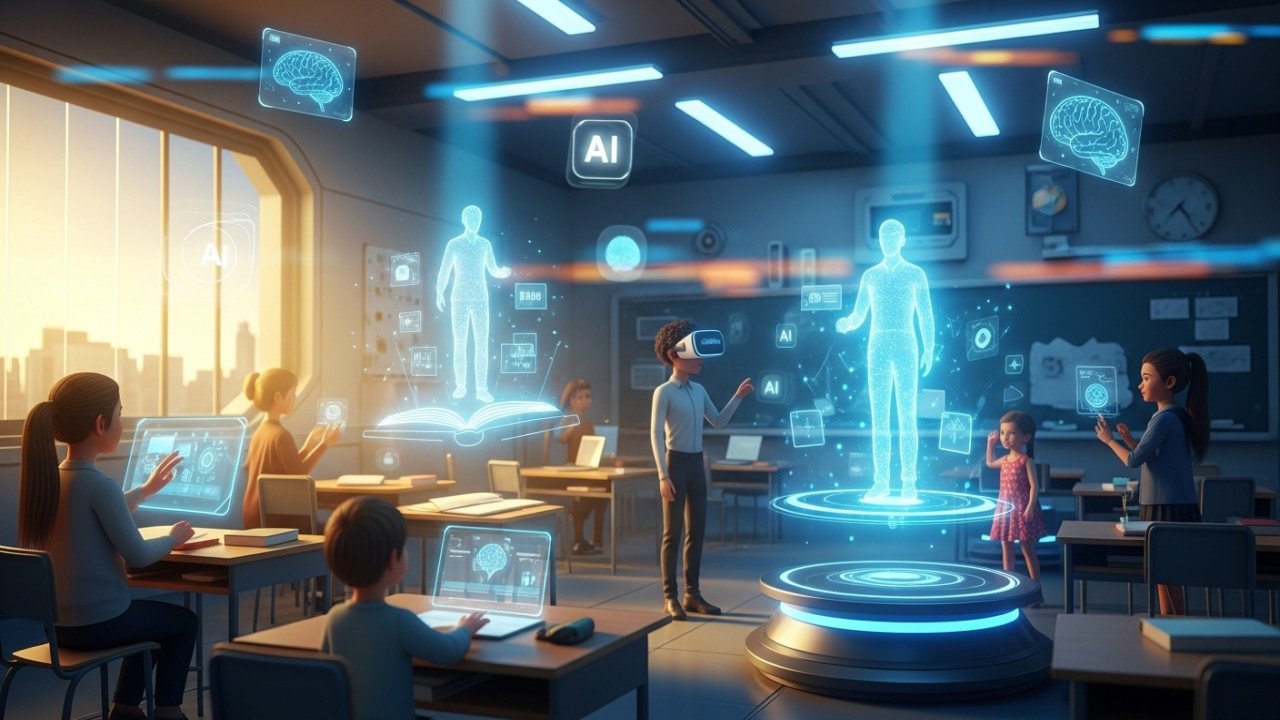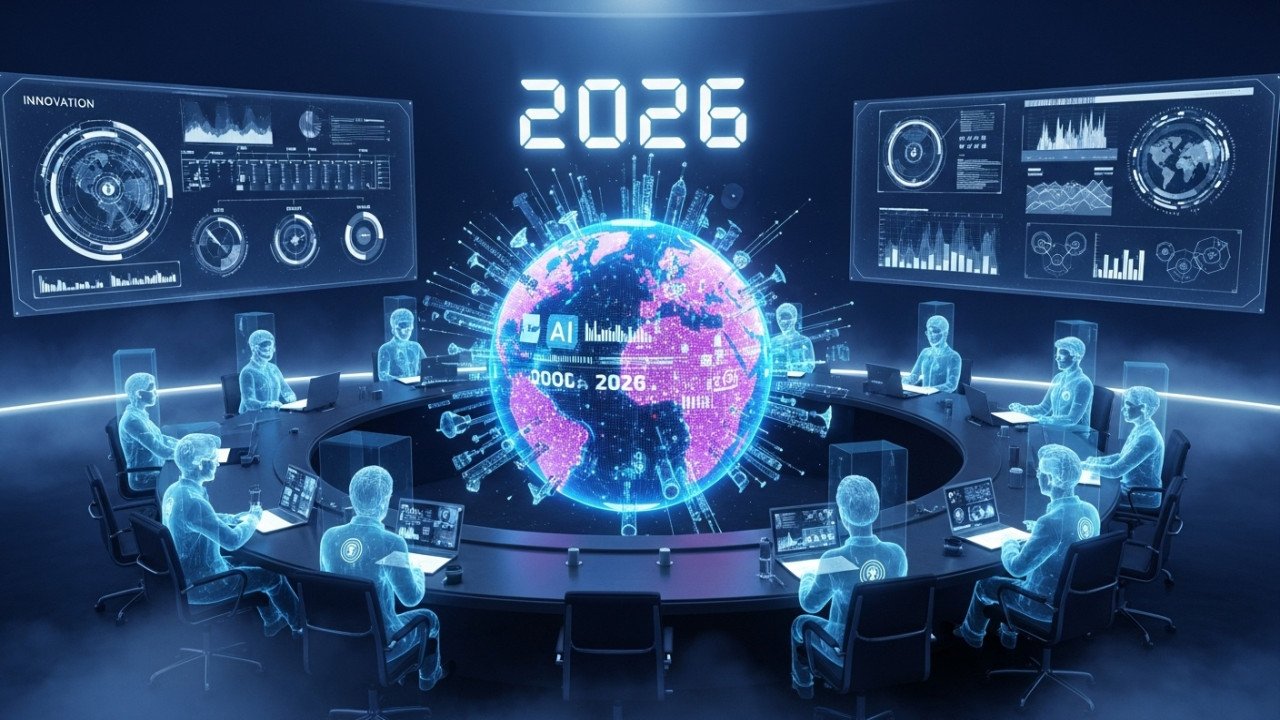AI Education Tools: Best Smart Learning Platforms 2025
AI-Enhanced Education: Best Smart Learning Platforms and Tools
The educational landscape is experiencing a revolutionary transformation as artificial intelligence reshapes how students learn, teachers instruct, and institutions operate. AI-enhanced education platforms are personalizing learning experiences, automating administrative tasks, and providing insights that help educators make data-driven decisions to improve student outcomes.
Smart learning platforms powered by AI can adapt to individual learning styles, pace, and preferences while providing real-time feedback and support that was previously impossible to deliver at scale. These technologies are breaking down traditional barriers to quality education and creating opportunities for personalized learning that meets every student where they are.
Understanding the current ecosystem of AI-powered educational tools and learning how to implement them effectively can significantly enhance educational outcomes while preparing students for a future where human-AI collaboration will be essential for success across all industries and career paths.
The Current State of AI in Education
Transformation of Learning Methodologies
Traditional one-size-fits-all educational approaches are giving way to personalized learning experiences that adapt to individual student needs, learning speeds, and cognitive preferences through sophisticated AI algorithms.
Adaptive learning systems now analyze student performance in real-time, adjusting difficulty levels, content presentation, and learning pathways to optimize comprehension and retention for each individual learner.
Intelligent tutoring systems provide 24/7 support that supplements classroom instruction with personalized guidance, explanations, and practice opportunities that help students master challenging concepts.
Assessment and evaluation methods have evolved beyond standardized testing to include continuous monitoring, competency-based progression, and real-time feedback that provides actionable insights for both students and educators.
Market Adoption and Growth
Educational institutions worldwide are rapidly adopting AI-powered learning platforms, with market growth projecting over 40% annual increases as schools recognize the benefits of personalized education technology.
K-12 schools are implementing AI tools for everything from reading comprehension and math practice to language learning and special education support, dramatically improving student engagement and outcomes.
Higher education institutions leverage AI for course recommendation systems, plagiarism detection, research assistance, and predictive analytics that help identify at-risk students before they struggle significantly.
Corporate training programs increasingly rely on AI-powered learning management systems that adapt to employee skill levels, track progress, and provide personalized development pathways for professional growth.
Benefits and Impact Evidence
Research consistently demonstrates that AI-enhanced learning platforms improve student engagement, comprehension, and retention rates compared to traditional instructional methods across various subjects and grade levels.
Personalized learning approaches enabled by AI have shown particular effectiveness for students with learning differences, English language learners, and gifted students who need accelerated or specialized instruction.
Teacher satisfaction and effectiveness improve when AI tools handle routine tasks like grading and progress tracking, allowing educators to focus on higher-value activities like creative instruction and individual student support.
Cost-effectiveness studies indicate that AI-powered education platforms can deliver quality instruction at scale while reducing per-student costs and improving accessibility for underserved populations.
Leading AI Learning Platforms
Comprehensive Learning Management Systems
Khan Academy utilizes AI to create personalized learning dashboards that recommend specific lessons and practice exercises based on individual student progress and identified knowledge gaps.
The platform's mastery learning approach ensures students fully understand concepts before advancing, while AI algorithms provide hints, feedback, and additional practice opportunities tailored to individual learning needs.
Progress tracking and analytics help both students and teachers understand learning patterns while identifying areas that need additional attention or support for continued academic growth.
Free access and comprehensive curriculum coverage make Khan Academy an accessible AI-powered learning solution for students worldwide, regardless of economic circumstances or geographic location.
Adaptive Assessment Platforms
ALEKS (Assessment and Learning in Knowledge Spaces) uses artificial intelligence to continuously assess student knowledge and provide personalized learning experiences that adapt to individual understanding and progress.
The platform creates detailed knowledge maps that show exactly what students know and don't know, enabling targeted instruction and practice that addresses specific learning gaps efficiently.
Real-time assessment capabilities eliminate the need for traditional testing while providing continuous feedback that helps students and teachers make informed decisions about learning progression and support needs.
Subject coverage spans mathematics, chemistry, statistics, and business, with AI algorithms that understand prerequisite relationships and optimal learning sequences for complex subjects.
Language Learning AI Systems
Duolingo employs sophisticated AI algorithms to personalize language learning experiences, adapting lesson difficulty, repetition frequency, and content selection based on individual learning patterns and retention rates.
The platform's AI-powered speech recognition technology provides pronunciation feedback and conversation practice that helps learners develop authentic speaking skills without human instruction.
Gamification elements powered by AI maintain student engagement while adaptive algorithms ensure appropriate challenge levels that promote consistent progress without overwhelming learners.
Research-backed methodologies combined with AI personalization have made Duolingo one of the most effective language learning platforms, with proven results across diverse learner populations and language combinations.
Specialized Subject Platforms
Carnegie Learning combines AI-powered adaptive learning with cognitive science research to create mathematics instruction that adjusts to individual student thinking patterns and problem-solving approaches.
The platform's AI tutor provides step-by-step guidance and feedback while learning analytics help teachers understand student thinking processes and identify effective instructional strategies.
Real-world problem contexts and interactive learning experiences engage students while AI algorithms ensure appropriate scaffolding and support for mathematical concept development.
Proven effectiveness in improving mathematics outcomes has made Carnegie Learning a trusted solution for schools seeking to enhance STEM education through personalized AI-powered instruction.
AI Tools for Different Educational Levels
Early Childhood and Elementary Education
ABCmouse uses AI to create age-appropriate learning activities and games that adapt to young children's developmental stages while maintaining engagement through colorful, interactive experiences.
The platform tracks progress across multiple subjects, including reading, mathematics, science, and art,t while providing parents and teachers with insights into children's learning development and interests.
Adaptive difficulty ensures that activities remain challenging but achievable, promoting confidence and continued learning motivation during critical early developmental periods.
Safety features and child-friendly interfaces make ABCmouse a trusted AI-powered learning environment for young learners exploring fundamental academic concepts and skills.
Middle and High School Solutions
DreamBox Learning provides AI-powered mathematics instruction that adapts to middle school students' individual learning needs while preparing them for advanced mathematical concepts and problem-solving skills.
The platform's intelligent adaptive engine adjusts lesson pacing, content presentation, and practice opportunities based on student responses and learning patterns identified through continuous assessment.
Real-time reporting helps teachers identify students who need additional support while providing insights into effective instructional strategies and learning progression patterns.
Standards alignment ensures that AI-powered instruction meets curriculum requirements while providing personalized pathways that help all students achieve mathematical proficiency and confidence.
Higher Education and University Tools
Coursera's AI-powered recommendation system suggests courses and learning paths based on student interests, career goals, and previous learning experiences while connecting learners with relevant professional opportunities.
The platform's adaptive learning features adjust content delivery and assessment based on individual progress while providing certificates and credentials recognized by employers worldwide.
Peer interaction and collaborative learning opportunities enhanced by AI matching algorithms connect students with similar interests and complementary skills for effective group learning experiences.
Integration with university systems and corporate training programs makes Coursera a versatile AI-enhanced learning platform for both academic and professional development applications.
Professional and Corporate Training
LinkedIn Learning leverages AI to recommend professional development courses based on career goals, skill gaps, and industry trends while tracking progress and competency development.
The platform's adaptive learning pathways adjust content based on existing skills and learning objectives while providing certificates that enhance professional credentials and career advancement opportunities.
Integration with LinkedIn profiles and professional networks creates personalized learning experiences that align with career development goals and industry requirements.
Analytics and reporting features help organizations track employee skill development while identifying training needs and measuring the effectiveness of professional development investments.
Implementation Strategies for Educational Institutions
Assessment and Planning Phase
Conduct comprehensive needs assessments that identify specific educational challenges, student populations, and learning objectives that AI-powered platforms can address most effectively within your institution.
Evaluate existing technology infrastructure, internet connectivity, and device availability to ensure the successful implementation of AI learning platforms while identifying necessary upgrades or investments.
Analyze budget constraints and funding opportunities, including grants, partnerships, and phased implementation approaches that make AI-enhanced education financially feasible for your organization.
Engage stakeholders, including administrators, teachers, students, and parents, in planning processes to ensure buy-in and support for AI implementation while addressing concerns and expectations.
Teacher Training and Professional Development
Provide comprehensive professional development programs that help educators understand AI capabilities while building confidence and competence in using these tools effectively for instruction.
Create an ongoing support system,s including peer mentoring, technical assistance, and regular training updates, es that ensure teachers can leverage AI platforms to their full potential.
Develop guidelines and best practices for integrating AI tools into existing curricula while maintaining educational quality standards and addressing individual student needs effectively.
Establish feedback mechanisms that help teachers share experiences and optimization strategies while continuously improving AI implementation across the educational organization.
Technology Integration Processes
Implement pilot programs that test AI platforms with small groups before full-scale deployment, allowing for optimization and problem-solving while minimizing disruption to ongoing educational activities.
Ensure seamless integration between AI platforms and existing school systems, ems including student information systems, grade books, and communication tools for efficient workflow management.
Establish data privacy and security protocols that protect student information while enabling AI platforms to function effectively and comply with educational privacy regulations.
Create technical support systems that provide immediate assistance for AI platform issues while ensuring minimal disruption to teaching and learning activities.
Student Onboarding and Support
Design orientation programs that help students understand AI learning platforms while building digital literacy skills necessary for effective use of these educational technologies.
Provide ongoing support resources,rces including tutorials, help desks, and peer assistance programs, that ensure students can access and benefit from AI-enhanced learning opportunities.
Create feedback systems that allow students to report issues and suggest improvements while helping optimize AI platform performance for diverse learning needs and preferences.
Establish equity initiatives that ensure all students have equal access to AI-powered learning tools regardless of economic circumstances, technical skills, or learning differences.
Personalized Learning and Adaptive Systems
Individual Learning Path Creation
AI algorithms analyze student performance data, learning preferences, and cognitive patterns to create customized learning sequences that optimize comprehension and retention for each individual student.
Adaptive systems adjust content difficulty, presentation style, and pacing based on real-time assessment of student understanding while maintaining appropriate challenge levels that promote growth.
Prerequisite mapping ensures students have the necessary foundational knowledge before advancing to complex concepts while identifying and addressing learning gaps that might impede progress.
Goal setting and progress tracking features help students take ownership of their learning while providing clear milestones and feedback that maintain motivation and engagement.
Real-Time Assessment and Feedback
Continuous assessment capabilities provide immediate feedback on student performance while eliminating the delays associated with traditional testing and grading methods.
Diagnostic analytics identify specific areas of strength and weakness while providing actionable insights for both students and teachers about effective learning strategies and support needs.
Competency-based progression allows students to advance based on mastery rather than time, ensuring solid foundation building while accommodating different learning speeds and styles.
Performance prediction algorithms help identify students at risk of academic difficulties before problems become significant, enabling proactive intervention and support.
Learning Analytics and Insights
Data visualization tools help educators understand student learning patterns while identifying effective instructional strategies and areas needing additional attention or resources.
Comparative analysis features enable teachers to understand how different approaches work for various student populations while optimizing instruction for diverse learning needs and preferences.
Predictive modeling helps forecast student outcomes while enabling early intervention strategies that improve success rates and reduce academic failure risks.
Research integration connects classroom data with educational research findings while providing evidence-based recommendations for instructional improvement and student support strategies.
Accessibility and Inclusive Learning
Universal Design for Learning
AI-powered platforms increasingly incorporate Universal Design for Learning principles that ensure accessibility for students with diverse abilities, learning differences, and technological needs.
Multi-modal content presentation, including text, audio, video, and interactive elements,s accommodates different learning preferences while ensuring all students can access educational materials effectively.
Assistive technology integration enables students with disabilities to participate fully in AI-enhanced learning experiences while receiving appropriate accommodations and support.
Cultural responsiveness features ensure that AI learning platforms reflect diverse perspectives and experiences while avoiding bias that could disadvantage certain student populations.
Language Learning Support
Multi-language capabilities enable English language learners to access educational content in their native languages while gradually building English proficiency through integrated language support.
Translation and pronunciation assistance help students understand complex concepts while developing academic language skills necessary for success in English-speaking educational environments.
Cultural adaptation features ensure that learning examples and contexts resonate with diverse student backgrounds while maintaining academic rigor and standards.
Bilingual learning pathways allow students to leverage their native language strengths while building competency in English academic content and communication skills.
Special Education Applications
Individualized Education Program (IEP) integration ensures that AI learning platforms accommodate specific learning differences and provide appropriate modifications and support services.
Behavioral monitoring capabilities help track student engagement and emotional responses while providing insights that inform intervention strategies and support planning.
Assistive communication tools enable students with communication differences to participate in AI-enhanced learning while building skills and confidence in academic environments.
Progress tracking features help special education teams monitor student growth while adjusting support strategies based on data-driven insights and evidence-based practices.
Assessment and Evaluation Tools
Automated Grading Systems
AI-powered grading platforms provide consistent, objective assessment of student work while reducing teacher workload and enabling more frequent feedback and evaluation cycles.
Natural language processing capabilities enable automated evaluation of written responses while providing detailed feedback on writing quality, content accuracy, and critical thinking skills.
Mathematical problem-solving assessment tools analyze student work processes while providing insights into thinking patterns and identifying areas needing additional instruction or support.
Plagiarism detection systems ensure academic integrity while helping students understand proper citation and original work requirements in educational contexts.
Performance Analytics Dashboards
Comprehensive reporting systems provide educators with actionable insights about student performance trends while identifying patterns that inform instructional decision-making and intervention strategies.
Real-time monitoring capabilities enable immediate response to student needs while providing early warning systems for academic difficulties or engagement issues.
Comparative analysis tools help teachers understand the effectiveness of different instructional approaches while optimizing strategies for diverse student populations and learning objectives.
Parent and student portals provide transparent access to progress information while promoting collaboration and communication between home and school environments.
Competency-Based Assessment
Skill mastery tracking ensures students demonstrate genuine understanding before progression while providing clear evidence of learning achievement and academic growth.
Portfolio assessment capabilities enable the collection and evaluation of diverse evidence of learning while supporting authentic assessment and student reflection processes.
Credentialing and badging systems recognize specific competencies and achievements while providing motivation and clear pathways for continued learning and skill development.
Standards alignment ensures that AI-powered assessment meets curriculum requirements while providing evidence of student progress toward educational goals and benchmarks.
Challenges and Considerations
Privacy and Data Security
Student data protection requires robust security measures and clear policies about how AI platforms collect, store, and use personal information while complying with educational privacy laws.
Parental consent and transparency about data usage help build trust while ensuring that families understand how AI tools support their children's education and development.
Third-party vendor management ensures that AI platform providers meet strict security standards while protecting student privacy and maintaining institutional control over educational data.
Data retention and deletion policies address long-term privacy concerns while balancing the need for learning analytics with students' rights to privacy and data control.
Equity and Access Issues
Digital divide concerns require addressing disparities in technology access while ensuring that all students can benefit from AI-enhanced learning regardless of economic circumstances.
Teacher training and support needs vary significantly across institutions, while requiring sustained investment in professional development to ensure effective AI implementation.
Infrastructure requirements,s including reliable internet and adequate devices, may create barriers for some schools while necessitating significant investment and planning for successful implementation.
Cost considerations affect AI platform adoption while requiring careful evaluation of return on investment and long-term sustainability of technology initiatives.
Pedagogical Integration Challenges
Balancing AI assistance with human instruction requires thoughtful integration that preserves essential teacher-student relationships while leveraging technology benefits effectively.
Curriculum alignment ensures that AI tools support rather than replace established educational standards while enhancing rather than disrupting effective teaching practices.
Assessment validity concerns arise when AI tools change how learning is measured while maintaining rigorous academic standards and meaningful evaluation of student progress.
Change management challenges require addressing resistance and building support for AI implementation while ensuring smooth transitions and continued educational quality.
Future Trends and Innovations
Emerging AI Technologies
Virtual and augmented reality integration will create immersive learning experiences that combine AI personalization with engaging, interactive educational environments.
Natural language processing advances will enable more sophisticated conversational AI tutors that can engage in complex discussions while providing nuanced feedback and support.
Predictive analytics will become more accurate at identifying learning patterns while providing proactive recommendations for educational interventions and support strategies.
Cross-platform integration will create seamless learning ecosystems where AI tools work together to provide comprehensive, coordinated educational experiences across multiple contexts.
Educational Methodology Evolution
Competency-based education models will expand as AI tools make it easier to track and assess skill mastery while supporting flexible, individualized learning pathways.
Project-based and experiential learning approaches will benefit from AI tools that provide real-time guidance and assessment while supporting complex, authentic learning experiences.
Collaborative learning will be enhanced through AI matching algorithms that connect students with complementary skills while facilitating effective group work and peer learning.
Lifelong learning paradigms will be supported by AI systems that track skills and knowledge across educational and professional contexts while providing continuous development opportunities.
Industry and Workforce Preparation
Career guidance systems will use AI to analyze student interests and abilities while providing personalized recommendations for educational pathways and professional development.
Skill gap analysis will help educational institutions align curricula with workforce needs while preparing students for careers in an AI-enhanced economy.
Industry partnerships will expand as businesses recognize the value of AI-enhanced educational preparation while contributing to curriculum development and student training programs.
Professional development integration will connect educational AI platforms with workplace learning systems while supporting seamless transitions from education to career advancement.
Best Practices for Implementation
Strategic Planning Approaches
Develop comprehensive implementation plans that address technology infrastructure, professional development, and change management while ensuring alignment with educational goals and institutional priorities.
Start with pilot programs that allow for testing and optimization while building support and expertise before full-scale implementation across the entire educational organization.
Establish clear success metrics and evaluation criteria that measure both efficiency gains and educational outcomes while ensuring that AI implementation genuinely improves learning experiences.
Create sustainability plans that address long-term funding, technology updates, and ongoing support while ensuring the continued effectiveness of AI-enhanced educational programs.
Quality Assurance Measures
Implement regular evaluation processes that assess AI platform effectiveness while identifying areas for improvement and optimization based on student outcomes and teacher feedback.
Maintain human oversight of AI-generated content and recommendations while ensuring that technology enhances rather than replaces professional educator judgment and expertise.
Establish feedback loops that incorporate input from students, teachers, and parents while continuously improving AI implementation based on user experiences and educational results.
Monitor for bias and ensure equitable outcomes across diverse student populations while addressing any disparities that may arise from AI algorithm decisions or recommendations.
Professional Development Strategies
Provide ongoing training opportunities that help educators develop expertise in AI tools while building confidence and competence in technology-enhanced instruction.
Create peer learning networks that enable teachers to share experiences and best practices while building institutional knowledge about effective AI implementation strategies.
Support experimentation and innovation while providing safe spaces for educators to explore AI capabilities without fear of failure or negative evaluation.
Connect professional development with career advancement opportunities while recognizing and rewarding effective integration of AI tools in educational practice.
Conclusion
AI-enhanced education represents a fundamental shift toward personalized, adaptive learning that can meet individual student needs while improving educational outcomes and accessibility across diverse populations.
The key to successful implementation lies in thoughtful integration that enhances rather than replaces human expertise while preserving essential relationships and pedagogical principles that drive effective education.
Educational institutions must approach AI adoption strategically, with comprehensive planning that addresses infrastructure, training, and change management while maintaining focus on student learning and success.
The future belongs to educational organizations that can effectively blend AI capabilities with human insight, creating learning environments that prepare students for success in an increasingly AI-integrated world.
Success requires ongoing commitment to professional development, equity, and innovation while maintaining the human elements that make education meaningful and transformative for learners of all ages.
As AI technology continues evolving, educators who embrace these tools while preserving core educational values will create learning experiences that exceed what either human instruction or artificial intelligence could accomplish alone.
The investment in AI-enhanced education today will determine tomorrow's educational effectiveness and student success in an increasingly complex and technology-dependent global society.
Read also: Build a Successful Blog with AI Writing Tools: Complete Guide.











Comments (0)
No comments found